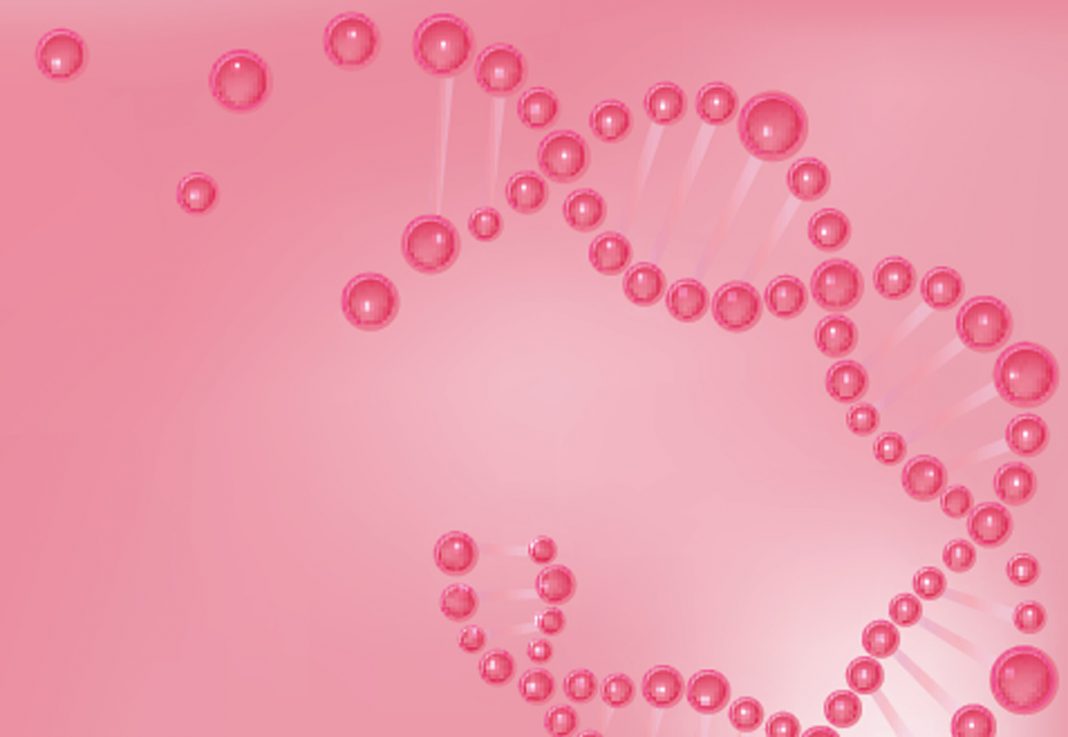Scientists at Boston Children’s Hospital and Northeastern University have developed a CRISPR genome editing system that suppresses the growth of triple-negative breast cancer (TNBC). A proof-of-principal study showed that a nanolipogel-delivered CRISPR system designed to target a known cancer gene halted tumor growth in a mouse model by 77%, without any evidence of toxicity to normal tissues. “Our results provide experimental evidence that in vivo CRISPR genome editing can halt TNBC tumor progression,” the team wrote in their published paper in the Proceedings of the National Academy of Sciences, which is titled, “Therapeutic genome editing of triple-negative breast tumors using a noncationic and deformable nanolipogel.”

director of the vascular biology program
Boston Children’s Hospital
TNBC is the most aggressive of all the breast cancer types, and has the poorest prognosis, explained the researchers, headed by Peng Guo, PhD, researcher, and Marsha Moses, PhD, director of the vascular biology program, Boston Children’s Hospital. TNBC occurs more frequently in women under the age of 50 years, in African American women, and in those carrying the BRCA1 gene mutation. “Over 32,000 patients are estimated to be diagnosed with TNBC in the United States in 2019, representing 12% of all new breast cancer cases,” the team wrote. “The extremely aggressive and metastatic nature of TNBC, coupled with fewer treatment options, has resulted in the worst mortality rates among all breast cancer subtypes, highlighting an urgent and unmet clinical need for novel precision medicines to treat TNBC.”
While CRISPR genome editing shows promise as a potential treatment or even cure for genetic diseases including cancer, in practice, most clinically focused CRISPR studies have focused on straightforward monogenic diseases, which are caused by defects in a single gene. “The therapeutic benefits of in vivo CRISPR genome editing on more complex, multigenic diseases (e.g., TNBC) are still unclear,” the investigators noted. “Until now, in vivo CRISPR genome editing has not been investigated as a targeted therapeutic for TNBC.”
Translating the potential of CRISPR genome editing into therapeutic platforms has been held back in part by the lack of effective delivery systems. Virally mediated delivery of the CRISPR elements isn’t suitable for carrying large payloads, and can potentially cause side effects in non-target cells. An alternative method involves encapsulating the CRISPR payload inside a cationic polymer or in lipid nanoparticles, but this can also result in toxicity, and the CRISPR elements may be trapped within the cell endosomes, or broken down before reaching the target cells.
The approach developed by the Boston Children’s Hospital team encapsulates the CRISPR system inside a soft, noncationic nanolipogel composed of nontoxic fatty molecules and hydrogels. The nanolipogel surface is then studded with antibodies targeting ICAM-1, a protein identified by the Moses laboratory in 2014 as a novel drug target for TNBC. Initial cell uptake studies indicated that the ICAM-1 antibodies effectively guide the CRISPR-containing nanolipogel particles to TNBC cells specifically. Further studies showed that, unlike stiffer nanoparticles, the soft tumor-targeted nanolipogel (tNLG) particles could readily fuse with the tumor cell membrane and deliver the CRISPR payload directly inside the cell. “ … tNLGs can selectively recognize and bind TNBC cells over normal breast cells, which may reduce their nonspecific toxicities in vivo, consistent with our previous findings using ICAM1 as a TNBC target,” the authors stated. “ … the deformable tNLGs can breach the tumor endothelial barrier more efficiently in vitro than their stiff counterpart, which may, in turn, enhance its in vivo performance.” As first author, Guo commented, “Using a soft particle allows us to penetrate the tumor better, without side effects, and with bigger cargo. Our system can substantially increase tumor delivery of CRISPR.”
To carry out proof-of-concept tests with the technology as a potential therapeutic strategy for TNBC, the researchers designed the CRISPR system to target Lcn2, an established cancer gene that they had previously found actively promoted breast cancer progression and metastasis, to generate tNLG-Lcn2KO nanolipogel particles. Tests in Lcn2-overexpressing human TNBC cell lines confirmed that the tNLG-Lcn2KO system was capable of “potent and efficient CRISPR genome editing,” and suppressed expression of Lcn2 at both the gene transcript and protein levels. CRISPR knockdown of Lcn2 in the TNBC cells led to reduced tumor cell aggressiveness and tendency to migrate, by inhibiting epithelial to mesenchymal transition (EMT), a mechanism that is implicated in promoting breast tumor progression and metastasis. The researchers say that even partial inhibition of EMT may “lead to a potent in vivo therapeutic benefit in TNBC therapy.”
They next injected the tNLG-Lcn2KO into TNBC-bearing mice, and found that within 24 hours of administration the ICAM-1-guided particles specifically homed in on the TNBC, at 1.7-fold higher levels than was achieved using control nanolipogel particles. The level of accumulation of tNLG-Lcn2KO in the mouse tumors was “significantly higher than the average tumor accumulation of conventional nanomedicines,” they noted.
To evaluate the therapeutic potential of the system TNBC-bearing mice received weekly injections of the tNLG-Lcn2KO nanolipogel particles, for four weeks, and the tumors were allowed to continue to grow for another four weeks. The results showed that compared with control animals, tNLG-Lcn2KO treatment reduced tumor volume by 77%, and tumor weight by 69%. The in vivo editing efficiency was about 81%, resulting in significantly reduced lcn2 protein levels in the tNLG-Lcn2KO treatment group compared with the results in mice receiving sham treatment. “These in vivo results provide experimental evidence that efficient in vivo CRISPR genome editing by tNLGs can generate a potent and specific therapeutic benefit against TNBC tumor growth.”
Encouragingly, there was no evidence of treatment-related toxicity in organs including the liver, spleen, and kidney, indicating that “the nanoformulation of tNLG is relatively safe to use for in vivo CRISPR genome editing.”
The authors concluded that their proof-of-principle study suggests that the tNLG formulation has “a promising and broad potential for translating CRISPR genome editing into a novel precision medicine in cancer therapy.” It should also be feasible to use tNLG as a platform delivery system to target TNBC using other targets to guide the nanolipogel particles to the TNBC tumors in vivo, they suggested. And different TNBC oncogenes, such as PIK3CA, WNT, and Notch, could also serve as alternative genome editing targets for Lcn2-negative TNBC subtypes, they pointed out. “Our system can deliver significantly more drug to the tumor, in a precise and safe way,” Moses concluded.






